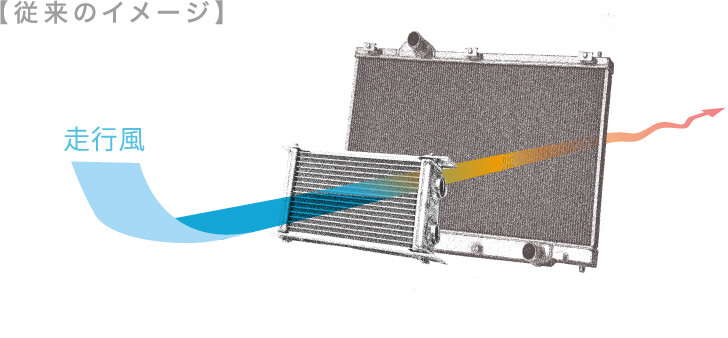

TSUI
対 (Air-cooled)
Both the radiator and the oil cooler use an air-cooling system that harnesses the flow of air generated by the moving vehicle. The radiator’s fan is used to cool the oil at the same time. In comparison to the liquid-cooling system, this system achieves better cooling effects when a car is going at a high speed.
-

Solutions for Perennial Problems
Installing an air-cooling oil cooler in front of the radiator to enable it to receive the greatest amount of air is the most common approach. With this configuration, the radiator lying behind the oil cooler receives blasts of hot air used to cool oil that is above 100°C. To solve this problem, we have reduced the heat dissipation area of the radiator—while minimizing any negative impact of this—and supplied an air-cooling oil coolant in the space created, efficiently bringing fresh air to both the radiator and the oil coolant.
-

An Integrated Model for Effective Airflow
Since a separate oil cooler does not need to be installed, the flow of air is not obstructed and more air can be channeled into the radiator.


SOU
匝 (Water-cooled)
As this model is not dependent on the incoming flow of air, the temperature is better managed with smaller temperature changes in comparison to the air-cooling system. When the engine starts, the temperature of the water quickly heats up the oil, minimizing damage to the engine and a decrease in fuel efficiency.






